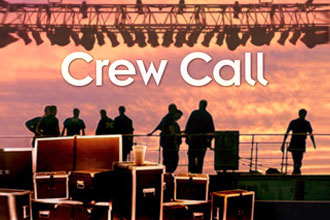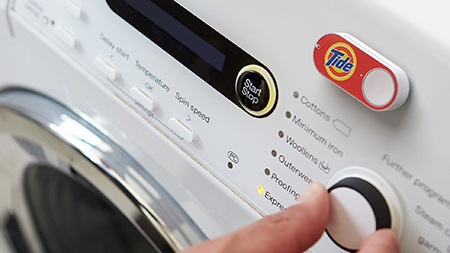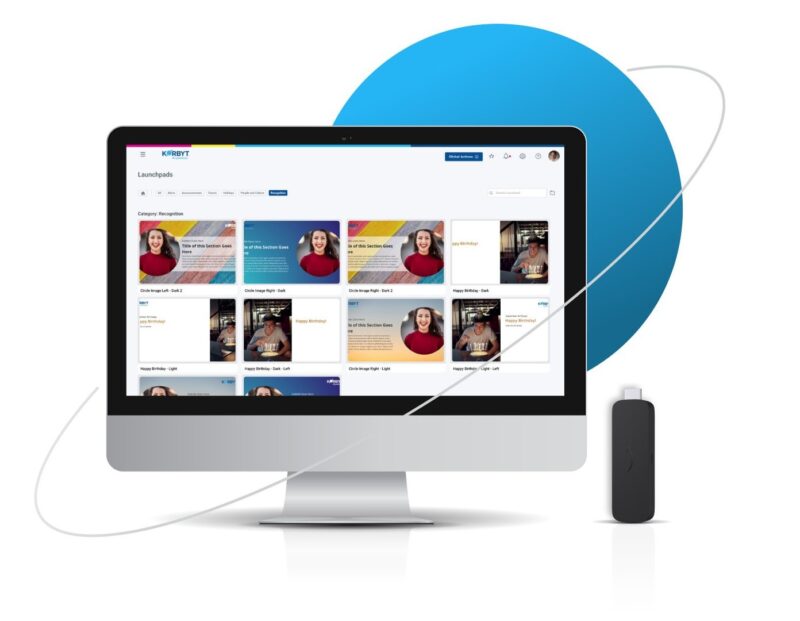The Backstage Cloud?
 This weekend, I was involved in a long conversation with a couple of colleagues from the industry. At one point during the discussion, I was asked what my favorite new technology announcement was. And I think that both of my colleagues were surprised that I did not mention some new piece of AV equipment.
This weekend, I was involved in a long conversation with a couple of colleagues from the industry. At one point during the discussion, I was asked what my favorite new technology announcement was. And I think that both of my colleagues were surprised that I did not mention some new piece of AV equipment.
My favorite new piece of technology: Amazon Prime Dash Buttons.
For those of you who did not see the announcement, Prime Dash Buttons are Jeff Bezos’ newest method of painlessly separating prime users from their money. They work like this: If there is a product that you use regularly, and you are a Prime member, you can order a stick on button from Amazon that is dedicated to a particular product that you use. You stick this button on the wall or in the cabinet where you store this product, and when you are running low you press the button. A new supply shows up two days later, delivered free via Amazon Prime.
What does this have to do with AV, you might ask? Well, my colleagues asked the same question. My answer: We are looking at the next generation of control systems, both for shows and for permanent installations. Essentially, this is the forerunner of true, decentralized, cloud-based control.
Why do I think so? Let’s look at history.
 Twenty five years ago, when I first started designing systems for shows, the answer to control was simple. Homosapiens. With more complex shows, we would simply have more operators. Playback of media occurred from many types of dedicated playback devices. At one time, in my rental fleet, we had to accommodate eight formats of video tape, And at least five or six types of computers, along with myriad audio, still frame, slide and movie playback devices. Materials largely arrived on the day of show, often leaving us scrambling when a different format than the one that we had shipped showed up.
Twenty five years ago, when I first started designing systems for shows, the answer to control was simple. Homosapiens. With more complex shows, we would simply have more operators. Playback of media occurred from many types of dedicated playback devices. At one time, in my rental fleet, we had to accommodate eight formats of video tape, And at least five or six types of computers, along with myriad audio, still frame, slide and movie playback devices. Materials largely arrived on the day of show, often leaving us scrambling when a different format than the one that we had shipped showed up.
As the industry grew, and shows and installations progressed, we added overarching control systems. We would program the show, or the presentation, so that we could run it from a button panel, keyboard or touch panel. These control surfaces were connected to a large control processor that in turn controlled all of the other devices. In shows, this was often separated by department, with a lighting controller, a video controller and an audio controller. Later on, we added super control systems (my favorite being Dataton’s TRAX system) to control the controllers.
In the installation market, which is (and always has been) much simpler, we would centralize control with a lot of programming and a single button panel or touch panel.
In both markets, for many years, we have touted this as simplification. However, with today’s market, both in shows and in installations, we are now dealing with a class of customer who do not see big touch panels with lots of graphics and multiple menu pages as a “simple” way to control things. As with even the best programmed control system, the use of these panels does require some training, and today more people are using these systems on an ad hoc basis and for shorter periods of time. Many of my customers now point to the ubiquitous Apple TV remote control as their standard for controlling things. The control interface, and the playback, are now becoming a single thing.
Couple this with the current trend to make the meeting materials and presentations cloud-based. Google Docs as well as Microsoft’s and Apple’s cloud systems are changing the way our clients put together their presentations, allowing everyone to combine their materials online, at their leisure. This also ensures that on arrival at the show the materials are current.
Compare this to what happens at shows among the technical crew, where often we are integrating multiple types of control on site, often editing the control programming from the rig used for the last show to the rig for this one.
Now combine those two things and think about the next generation of show control. First, it should be based in a cloud, so that the various disciplines can do their editing online rather than on site. This means that both the programming and the materials need to be divorced from specific hardware playback devices, rather than pre-programmed into some large show or room controller, so that versions and edits become less difficult to deal with. This would be especially useful in touring shows, where parts of the crew travel and parts are obtained locally for each specific venue.
We have already done this with editing, we’ve already done this with presentations and we have already done this with project management, so I do not think it is a far out prediction to say that we will soon do it with control.
And, for me, the Prime Dash Buttons point the way to a decentralized control system where the programming occurs in a cloud and control points can be easily spread out to any user who needs that specific control point at a specific time in the show. But, more than that, it means that our presentation materials and our control interface can be combined, with control points embedded in the show, leading to more complex shows that can be more easily controlled by the end-user, as the client is rapidly changing from someone who doesn’t want to touch the controls to someone who does, but once that control highly simplified and painless to understand.
We are already seeing some of this philosophy take place among the control manufacturers, each of whom now offer some simplified online method of programming their control hardware.
Next, they need to divorce themselves from the idea of control hardware, and move the hardware requirement (or lots of it) to the cloud.
Hey control manufacturers — any takers?





